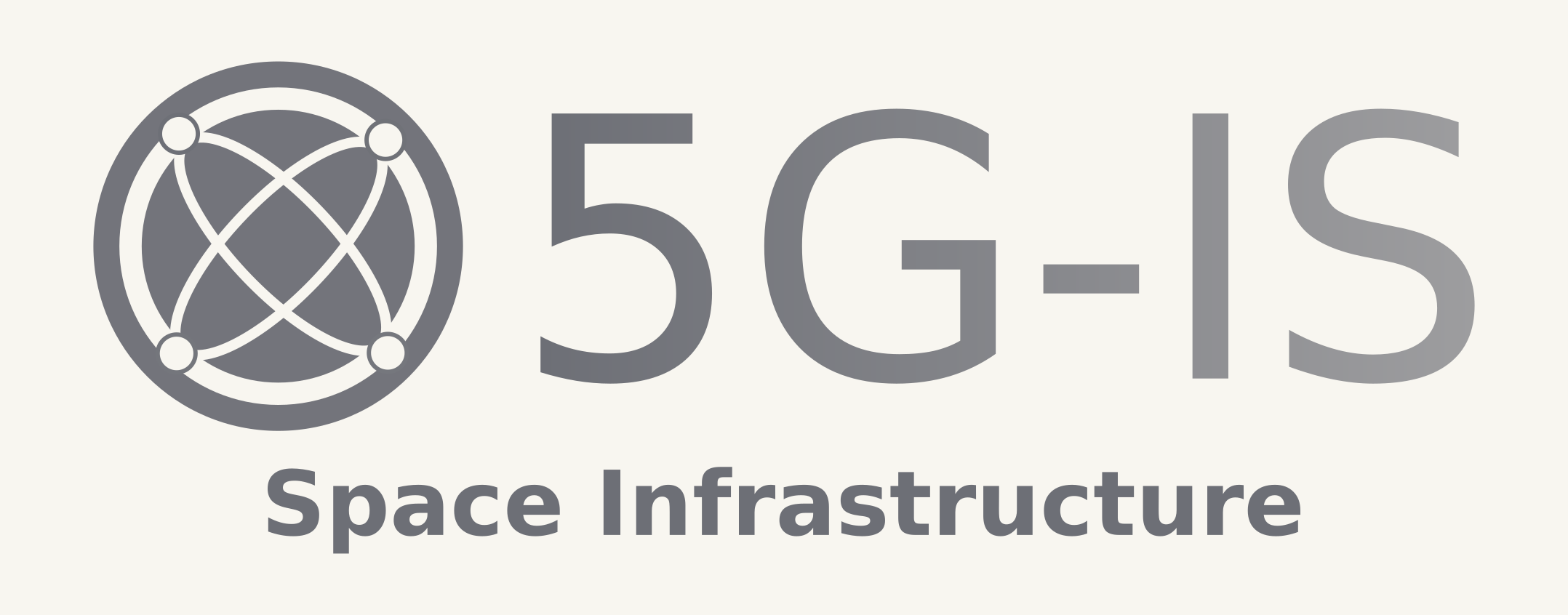
-
StatusOngoing
-
Status date2023-04-05
-
Activity Code1A.111
The study focusses on a comprehensive technical and programmatic vision of how a 5G and beyond 5G space-based infrastructure can provision services for consumers and various industries meeting 5G key performance indicators in terms of performance, reliability, resilience, and security.
In addition, the scope of the study encompasses the challenging task to propose a non-terrestrial network (NTN) infrastructure and its deployment scenarios to deliver advanced communication services in a timely and cost-efficient manner - converging towards a future Satcom technology roadmap in line with the emerging 6G concepts.
The key objectives of the study are:
-
To consolidate requirements to support a variety of vertical industries and consumers, in agreement with industry stakeholders and regulators
-
To define services that support these vertical market segments over the mid (2025) and long term (beyond 2030)
-
To define overall system architecture and its components
-
To define system convergence and integration with 5G and beyond 5G terrestrial networks, considering relevant standards such as 3GPP
-
To elaborate roadmaps in support of the development, validation, implementation of the proposed architecture and its components, including necessary research
-
To establish recommendations for financing mechanisms with valid procurement and deployment models for the realisation of the proposed infrastructure.
-
To investigate in more detail the Automotive vertical market by quantifying the benefits of 5G NTN to automotive use cases, identifying viable deployment scenarios and value chains and establishing a strategic roadmap and action plan. For this purpose workshops will be conducted with representatives from the automotive and the telecommunications industry (MNOs and equipment providers).
The key challenges of the study are
-
The very ambitious schedule together with
-
a large number of vertical markets and associated use cases accessible to satellite connectivity that need to be assessed as well as
-
a multitude of possible architecture and implementation options for the space-based infrastructure
-
-
The continuing evolution of the boundary conditions due to the ongoing standardization effort both on terrestrial and on non-terrestrial networks
-
The uncertainty associated with the currently emerging 6G concepts and the resulting impact on the space-based infrastructure in the long-term beyond 2030
The key objective of the study is the development of a globally competitive solution for a space-based infrastructure as complement to terrestrial networks providing 5G beyond 5G and 6G connectivity and services to address the specific market needs with a time horizon of 5 and 10 years.
The service requirements established in the 3GPP standardisation group specify explicitly that the 5th Generation (5G) telecommunication system shall be able to provide services using satellite access.
This will pave the way for space assets to be seamlessly integrated into the 5G and beyond 5G ecosystem and to become an essential part of the global telecommunications infrastructure. Consequently, it will enable telecommunications providers (such as mobile network operators) to provide optimized customer service in regions (for instance rural and remote) and under circumstances where purely terrestrial infrastructure would require significant investment with little hope for sizable profits.
For vertical industries and consumers, a 5G space-based infrastructure integrated with terrestrial networks would offer much improved service especially with respect to continuity, ubiquity, and scalability.
And satellite operators will - by becoming part of global telecom ecosystem - be able to address new markets and serve many additional use cases.
A 5G NTN space-based as specified in 3GPP Release 17 and beyond could provide at least the following features:
-
Roaming between terrestrial and satellite networks
-
Extra territorial 5G services
-
Broadcast and multicast with satellite overlay
-
Massive Internet of Things with the satellite network element
-
Optimal routing of 5G traffic over the satellite
-
Satellite trans-border service continuity
-
Satellite system functional integration to minimise end-to-end delay
-
Fixed and moving backhaul services over all targeted service areas
In addition, it could support global coverage, direct and indirect user access, increased security for a multitude of "traditional" vertical markets in the areas of transportation as well business and public services. In the mid- to long-term also more innovative use cases such as Holo-decks, collaborative production chains, autonomous mobility, stream-based insight, overlapping global villages can be addressed. Also, a convergence of satellite communications with other space functions - accurate positioning, secure communications with QKD, precision earth observation input and satellite data repatriation - can become a reality in the not-too distant future.
The 5G NTN space based infrastructure (5GSBI) system consists of the following architecture elements:
-
Space nodes, i.e., satellites - possibly of different types, sizes and in different orbits (vLEO, LEO, MEO, GEO, HEO) or even HAPS - with an RF payload for communication with users on ground and with the
-
Ground Nodes/Gateways that are connected to the 5G terrestrial core network
-
Ground Control segment (CGS) for control and operation of space nodes and gateways as well as for management of network data streams and interfaces within the 5GSBI and to the core network and the users.
The external interfaces of the 5GSBI are:
-
RF links between the Space Nodes and the User Equipment
-
Terrestrial 5G network links between the Gateways and the Core Network
-
Command/Control interfaces between the CGS and the 5G terrestrial ecosystem (stakeholders and customers) for network management and orchestration as well as all administrative concerns
The users with their equipment for direct access to the satellite or with a relay station for indirect access and the core network are not part of 5GSBI. Their interfaces to the 5GSBI, however, play a central role for the definition and configuration of the system.
Within the Automotive Extension a special focus was on the discussion of suitable automotive terminals (UEs) and on the architecture options to achieve full integration between terrestrial and non-terrestrial networks.
The study originally had a planned duration of 12 months with a completion date in mid-2022. It was extended by 9 months in August 2022 to conduct a deep dive into the Automotive Vertical market. The main milestones are the consolidation of the vertical markets and associated use cases (MS 1), the compilation of the mission and user requirements (MS 2), the definition of system requirements and architectures (MS 3), the completion of the technology development roadmap (MS 4), the completion of the workshops for the Automotive Extension (MS 5) and the finalisation of the study with delivery of a position paper describing the major findings with particular focus on recommendations for the 5G space-based infrastructure as well as for technology and demonstration roadmaps and associated deployment and procurement models.
The study has started in July 2021 and is in its final phase where almost all of the deliverables of the original study scope have been delivered, all the workshops for the Automotive Extension have been conducted and the respective deliverables are currently being prepared. Completion is expected by May/June 2023.




